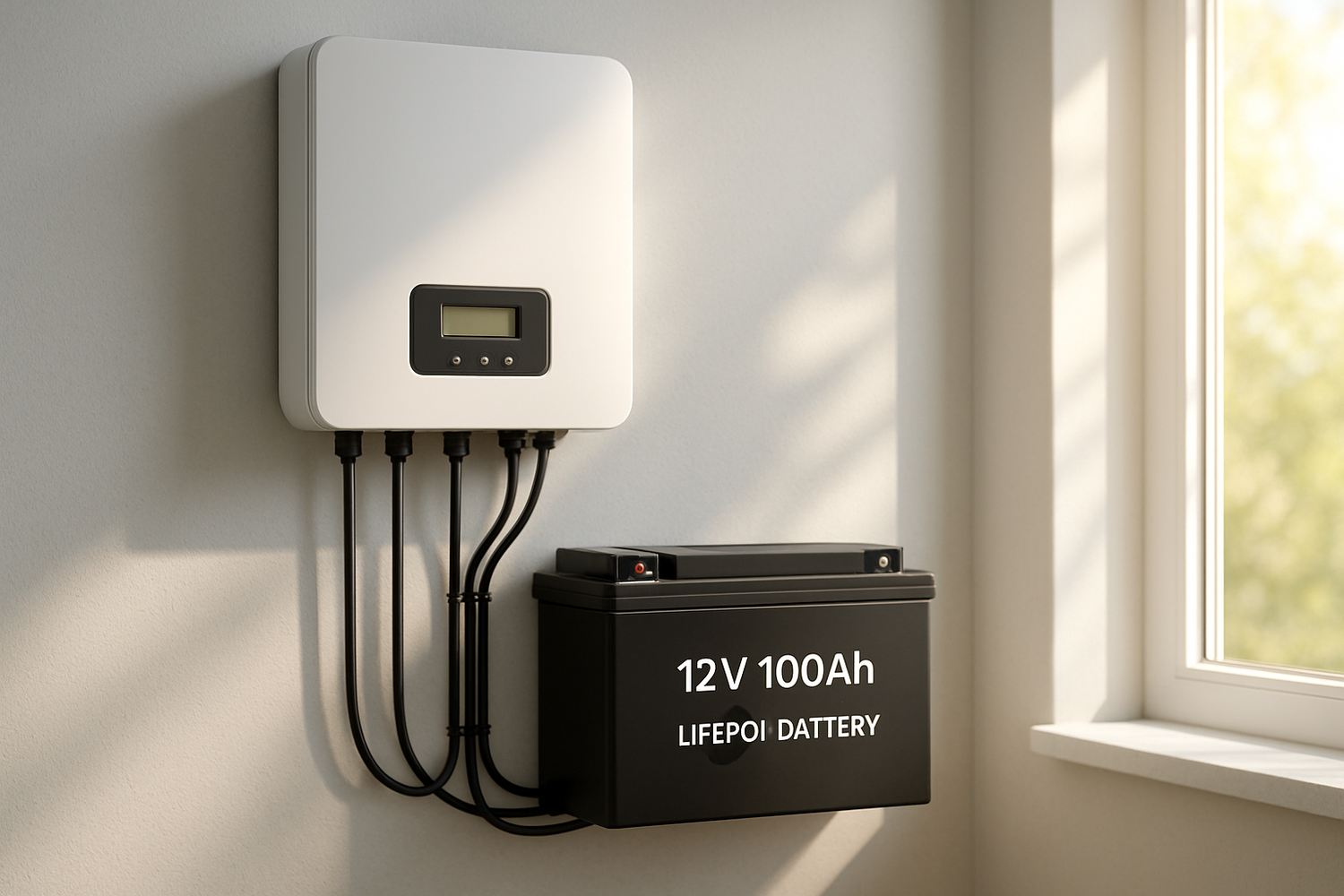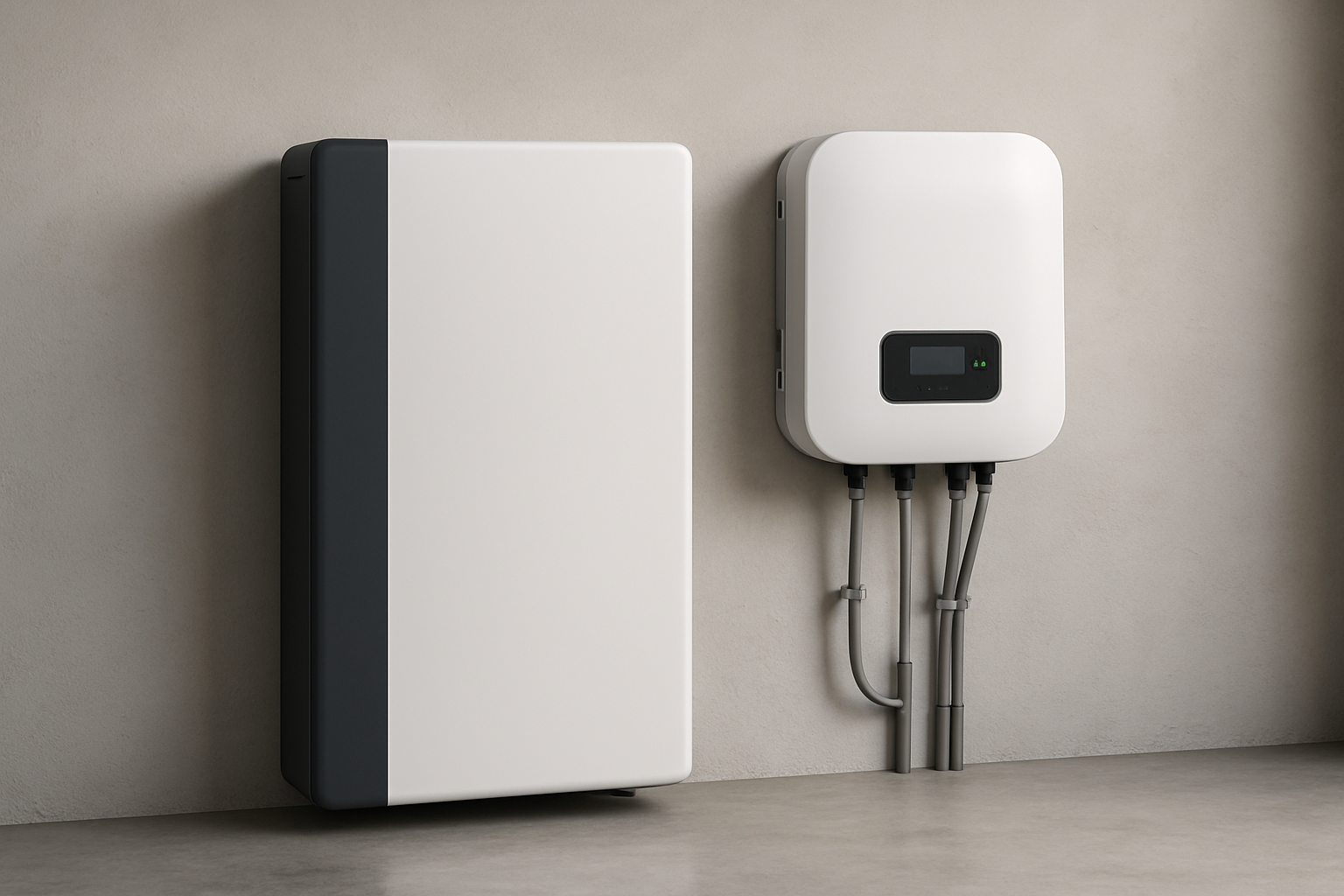Pursuing energy independence is about gaining control over your power supply, reducing reliance on the grid, and ensuring stability in an unpredictable world. At the heart of this transition is a reliable energy storage solution. The 12V 100Ah LiFePO4 battery has emerged as a foundational component for robust solar and off-grid power solutions, offering a unique blend of performance, safety, and long-term value.
What Makes the 12V 100Ah LiFePO4 Battery a Superior Choice?
Not all batteries are created equal. The specific chemistry of Lithium Iron Phosphate (LiFePO4) provides distinct advantages over traditional lead-acid and other lithium-ion variants, making it ideal for solar energy storage.
The Core Technology: Lithium Iron Phosphate Explained
LiFePO4 chemistry is known for its incredible stability. Unlike other lithium-ion chemistries that use cobalt, LiFePO4 uses phosphate, which creates an exceptionally strong molecular bond. This structure is highly resistant to thermal runaway, meaning it is far less likely to overheat or catch fire, even if punctured or short-circuited. This inherent safety is a critical factor for any home energy system.
Lifespan and Durability: An Investment That Lasts
One of the most significant solar battery storage benefits is longevity, and this is where LiFePO4 technology excels. A typical 12V 100Ah LiFePO4 battery can deliver between 3,000 and 7,000 charge cycles, whereas traditional lead-acid batteries often last for only 300-500 cycles. This extended lifespan means you won't need to replace your batteries every few years, making it a more sustainable and cost-effective choice over the long term. Furthermore, they can be safely discharged to 80-100% of their capacity without significant degradation, giving you access to more usable energy.
Safety and Stability as a Top Priority
Beyond the stable chemistry, LiFePO4 batteries include an integrated Battery Management System (BMS). This electronic system is the brain of the battery, protecting it from common issues like overcharging, over-discharging, and extreme temperatures. The BMS ensures each cell in the battery pack is balanced, optimizing both performance and the battery's operational life.
Practical Applications for True Energy Independence
The versatility of the 12V 100Ah LiFePO4 battery makes it suitable for a wide range of applications, from remote cabins to suburban homes seeking resilience.
Powering Off-Grid Lifestyles
For those living in RVs, boats, or remote homes, off-grid power solutions are a necessity. A LiFePO4 battery bank is the core of these systems, storing energy generated by solar panels for use at night or during overcast days. According to a report from the International Renewable Energy Agency (IRENA), battery storage is crucial for balancing the variable nature of solar and wind power in mini-grids, helping to eliminate the need for fossil-fuel backup generators.
Reliable Backup for On-Grid Homes
Grid outages are becoming more common, leaving households without power for hours or even days. A solar-plus-storage system powered by a LiFePO4 battery acts as a seamless backup. When the grid goes down, the system can automatically switch over, keeping lights, refrigerators, and essential medical devices running. This provides a quiet, clean, and maintenance-free alternative to traditional diesel generators.
Enhancing Solar Self-Consumption
For homes with grid-tied solar panels, much of the energy is produced during the middle of the day when household consumption is often low. Without storage, this excess energy is sent back to the grid for minimal compensation. The International Energy Agency (IEA) highlights that installing battery storage allows homeowners to increase their self-consumption by storing this excess solar energy. You can then use this stored, free energy during the evening when electricity rates are typically highest, significantly reducing your utility bills.
Understanding the LiFePO4 Battery Cost and Value Proposition
While the initial investment in LiFePO4 technology is higher than for lead-acid batteries, a closer look at the total cost of ownership reveals a different story.
Deconstructing the LiFePO4 Battery Cost
The upfront cost of a LiFePO4 battery can be two to four times that of a comparable lead-acid battery. However, this initial price tag is misleading. The true measure of value is the Levelized Cost of Storage (LCOS), which considers the total cost over the battery's lifespan divided by the total energy it delivers. Due to its long cycle life and higher efficiency, the LCOS of LiFePO4 is significantly lower.
| Metric | LiFePO4 Battery (12V 100Ah) | AGM Lead-Acid Battery (12V 100Ah) |
|---|---|---|
| Upfront Cost (Approx.) | $300 - $600 | $150 - $250 |
| Cycle Life (at 80% DoD) | 3,000 - 7,000 cycles | 300 - 700 cycles |
| Usable Capacity (DoD) | 80-100% | 50% |
| Maintenance | None | None (but sensitive to deep discharge) |
| Cost Per Cycle (Approx.) | $0.05 - $0.15 | $0.30 - $0.50 |
Disclaimer: This table provides estimated values for comparison. Actual costs and performance may vary based on brand, usage, and environmental conditions. This information does not constitute investment advice.
Long-Term Savings and Return on Investment
The superior cycle life means a single LiFePO4 battery can outlast multiple sets of lead-acid batteries, eliminating replacement and installation costs over time. Its high efficiency (often over 95%) ensures that more of your solar energy is stored and used, further maximizing your investment. To fully grasp how these factors contribute to long-term value, it's helpful to understand key performance indicators. The ultimate reference on solar storage performance offers a detailed look at metrics like Depth of Discharge and cycle life, which are crucial for evaluating a battery's true potential.
The Intangible Value of Energy Security
Beyond financial calculations, the greatest benefit is energy security. Knowing you have a reliable power source that is independent of the grid provides invaluable peace of mind. This resilience protects your family and property during emergencies and insulates you from rising electricity costs and grid instability.
Integrating a 12V 100Ah Battery into Your System
Building a solar energy storage system requires a few key components working together. The 12V 100Ah LiFePO4 battery is a versatile building block for systems of all sizes.
Key Components for a Complete Setup
A complete solar power system includes:
- Solar Panels: To capture energy from the sun.
- Charge Controller: To regulate the power from the panels to the battery, preventing overcharging. An MPPT controller is recommended for LiFePO4 batteries.
- LiFePO4 Battery: To store the energy.
- Inverter: To convert the DC power from the battery into AC power for your household appliances.
Sizing and Scalability
A single 12V 100Ah battery provides 1,280 Watt-hours (Wh) of energy storage. This is a great starting point for small applications. For greater needs, these batteries are easily scalable. You can connect them in parallel to increase capacity (e.g., two 100Ah batteries become 200Ah) or in series to increase voltage (e.g., four 12V batteries create a 48V system for larger inverters). This modularity allows you to design an energy storage system perfectly tailored to your needs.
A Step Toward a Resilient Future
The 12V 100Ah LiFePO4 battery is more than just a power source; it's a tool for empowerment. By providing safe, reliable, and long-lasting energy storage, it serves as the cornerstone of modern energy independence. Whether you are building an off-grid power solution or fortifying your home against outages, this technology offers a clear path toward a more resilient and self-sufficient future, putting you in complete control of your energy.
Frequently Asked Questions
How many solar panels do I need to charge a 12V 100Ah LiFePO4 battery?
A common setup involves using 200 to 400 watts of solar panels. This amount can typically recharge a 100Ah battery from 50% discharge in about 3-6 hours of direct sunlight, depending on weather conditions and the efficiency of your charge controller.
Can I use a regular car battery charger for a LiFePO4 battery?
It is not recommended. LiFePO4 batteries require a specific charging algorithm to ensure safety and longevity. Always use a charger specifically designed for LiFePO4 chemistry, as lead-acid chargers can damage the battery or reduce its lifespan.
What is a Battery Management System (BMS) and why is it important?
A Battery Management System (BMS) is an electronic circuit that monitors and manages the battery's state. It protects the cells from overcharging, over-discharging, short circuits, and extreme temperatures. An integrated BMS is essential for the safe and reliable operation of any LiFePO4 battery.
How long will a 100Ah LiFePO4 battery power my devices?
A 12V 100Ah battery holds approximately 1280 Watt-hours (12.8V x 100Ah). To find out how long it will last, divide 1280 by the total wattage of your devices. For example, it could power a 100-watt load for about 12.8 hours. Remember to account for inverter inefficiency, which is typically around 10-15%.





Leave a comment
All comments are moderated before being published.
This site is protected by hCaptcha and the hCaptcha Privacy Policy and Terms of Service apply.